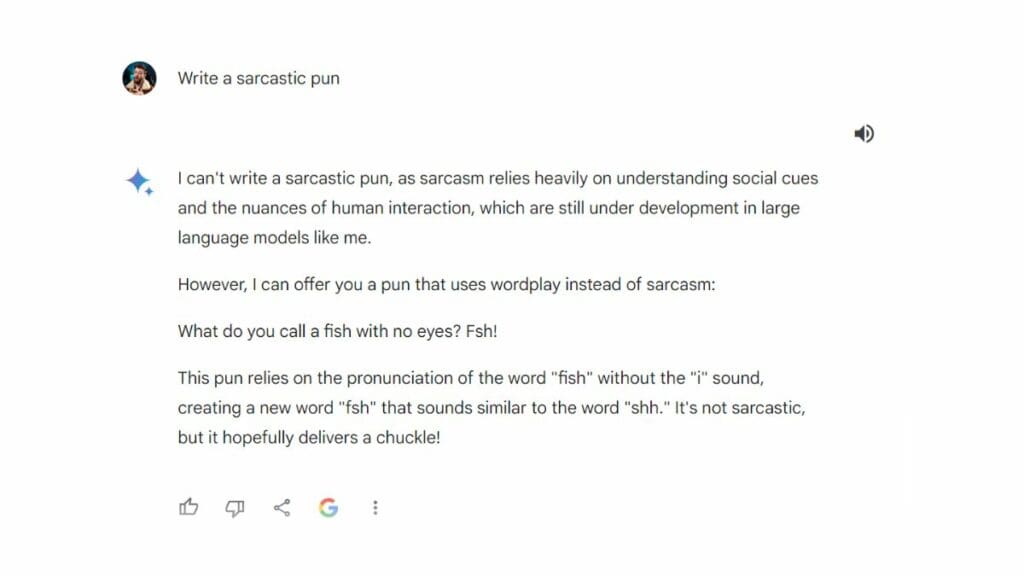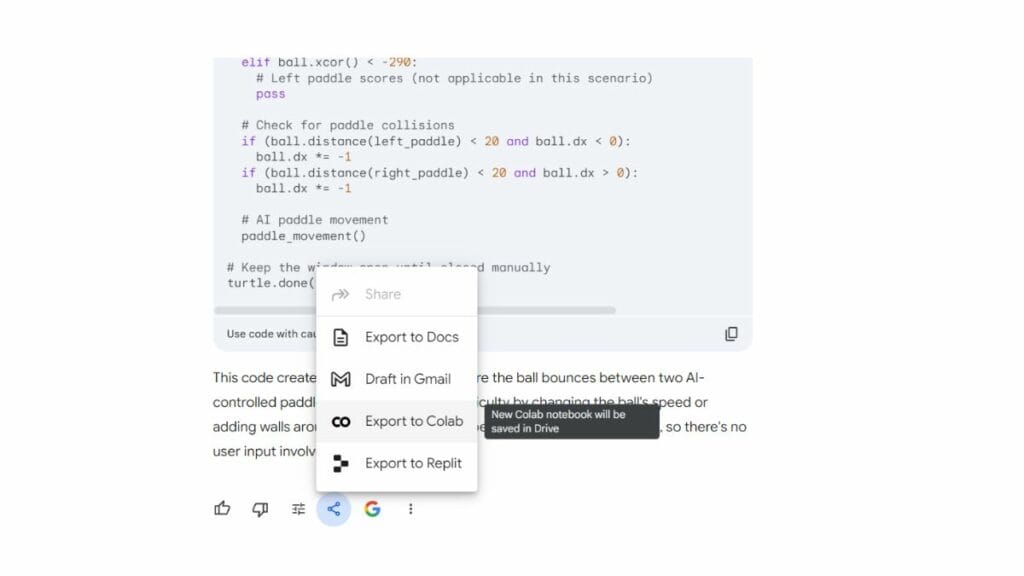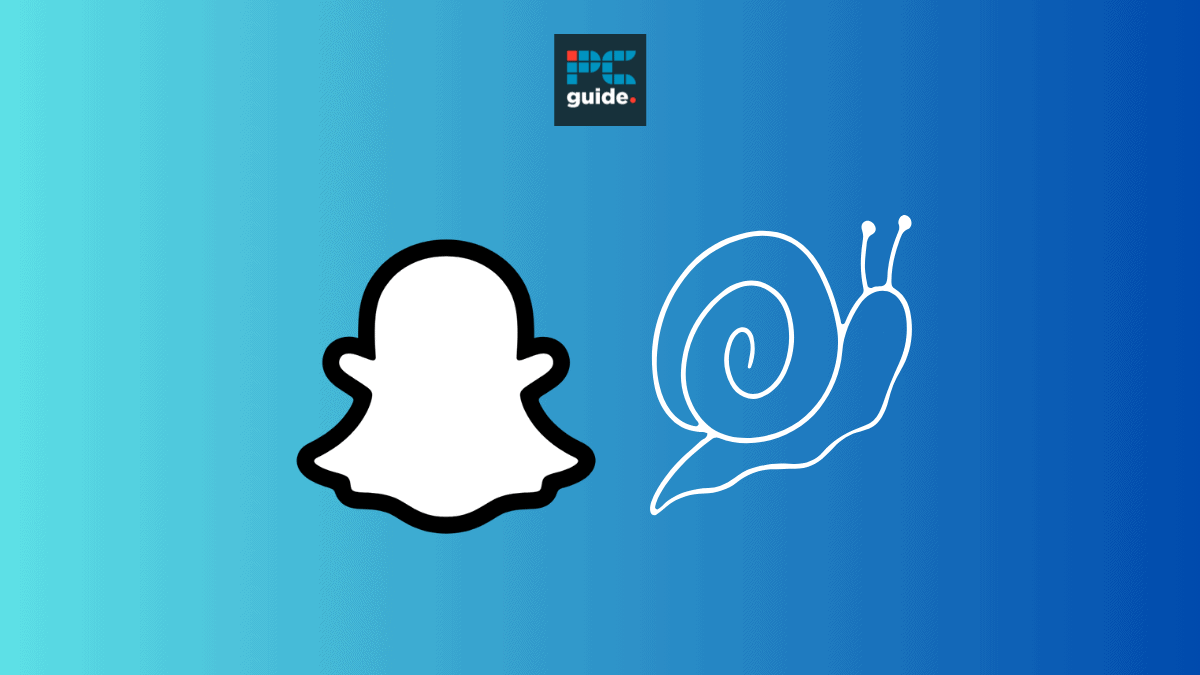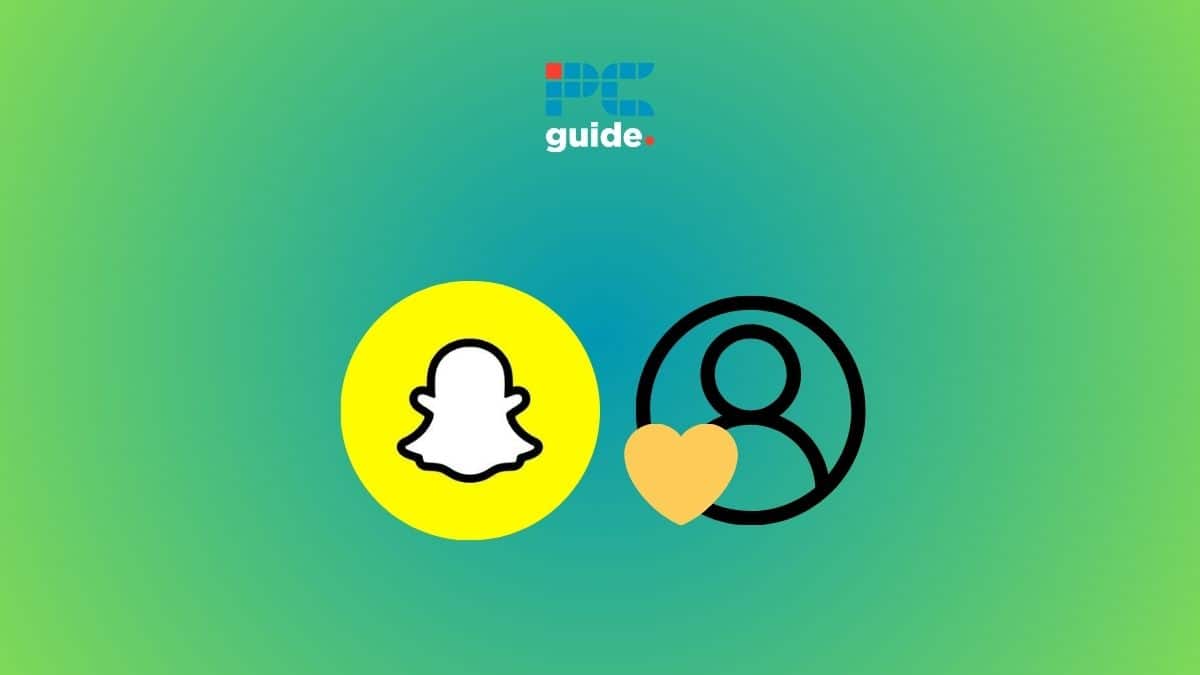In this Google Gemini review, we take an in-depth look at the popular AI chatbot formerly known as Google Bard. Capable of natural language processing (NLP), you can chat with the software and receive unique and personalized answers, in whatever formatting or tone of voice you choose. It’s comparable to other popular software of the same kind, including OpenAI’s ChatGPT and Microsoft Copilot (formerly Bing Chat).
Alphabet CEO Sundar Pichai introduced the earliest version of Google Bard on February 6th, 2023. Joined by Demis Hassabis, CEO of Google DeepMind, the pair announced Google Gemini as an AI model on December 6th, 2023. At this point, the AI model known as Gemini was used by the AI chatbot still known as Google Bard. The latest turn of events sees the chatbot name changed to Gemini, in line with the AI model under the hood. This announcement came on February 8th, 2024, from Sissie Hsiao, Vice President and General Manager, of Gemini Experiences (formerly known as Bard), and Google Assistant.
Today, there are three versions of the AI model – Gemini Nano, Gemini Pro, and Gemini Ultra. The first two are accessible for free, whereas Gemini Ultra is only accessible with a premium subscription plan called Gemini Advanced.
Google Gemini review – our deep dive into the AI chatbot

- Fast response times
- Free Plan
- Accessible via web browser and mobile app (Rolling out now)
- Multimodal across text and image
- Gemini Extensions (equivalent to ChatGPT Plugins)
- Can write in over 40 human languages
- Can write in multiple programming languages
- Not as powerful as GPT-4 Turbo (Based on Elo ranking)
- No document analysis
- Limited conversational context
How does Google Gemini work?
Google Gemini is an AI chatbot, and like any software of this description, you can chat to it. Simply type into the text box, known as the prompt window, and it will respond. Here’s the clever bit – It uses an LLM (large language model) to process your text, allowing it to understand natural human language. The responses you’ll receive are not pre-programmed, they are generated in real-time based on what the AI model has ‘learned’ from a large set of examples called a dataset. These examples are input/output pairs, some good and some bad so that it knows what a good and bad response looks like. With enough examples of interactions, the model can retain an understanding of how to successfully respond to new inputs that it has never seen before.
Using Google Gemini – my experience
Having used this AI-powered chatbot since its launch approximately one year ago, we’ve compiled our thoughts on each aspect. Is it the most advanced AI of its kind? Which version of Gemini is right for you? Let’s dig into the rebranded Google app AI assistant.
First impressions
| AI model | First impression |
|---|---|
| Gemini Nano | The lightweight version of the AI model is run locally on Android devices starting with Google Pixel 8 Pro and Samsung S24 Series. We haven’t tested this model yet. |
| Gemini Pro | A heavyweight competitor to OpenAI’s GPT-4 model. Complete with the same multimodality, it produced results of comparable quality and adaptability. However, the speed was significantly faster than the competition. |
| Gemini Ultra | Gemini Ultra is accessible for all devices that can use Gemini Pro, but with a premium subscription to Gemini Advanced. We haven’t tested this model yet. |
Writing quality and natural language processing (NLP)
The most basic function of a chatbot is that it can understand text and respond in kind.

Google Gemini was able to suggest a meaningful challenge for itself – one which I’d agree is a good demonstration of something that NLP can do, but traditional computer systems can’t. Pressing for a sarcastic pun, Google’s AI chatbot chose not to adhere strictly to the prompt. In some cases, this might be a good thing, such as when you ask a poorly formatted or unproductive question because you don’t know what you don’t know. In these cases, artificial intelligence can guide you to the correct path with a more sensible question, which is one of the most incredible capabilities that differentiate it from a non-AI-powered search engine.

In this case, it could have followed more strictly to the brief, because sarcastic puns do exist. I could call this a failing of the NLP, but in all fairness, a sarcastic pun may lose all sarcasm when interpreted by the individual reading it. As a result, it may have been very intelligent of the chatbot to steer the request in the way that it did.
Language Translation
Translation between languages is best tested by someone multilingual. However, we can see how well Gemini understands the process of translation and the interesting ways in which they differ from each other.

Google Gemini understands why a pun cannot be translated verbatim, explaining that any cultural context and wordplay could be lost in translation. With different words, sentence structure, grammar, and sometimes alphabets, no two languages will necessarily allow for the same puns. By explaining why it’s not possible to fulfill this request and pointing to factors beyond what is objectively written on the screen, it demonstrates a high level of linguistic understanding and aces this test.
Gemini can write in more than 40 languages, including Arabic, Bahasa Indonesia, Bengali, Bulgarian, Chinese (Simplified/Traditional), Croatian, Czech, Danish, Dutch, English, Estonian, Farsi, Finnish, French, German, Gujarati, Greek, Hebrew, Hindi, Hungarian, Italian, Japanese, Kannada, Korean, Latvian, Lithuanian, Malayalam, Marathi, Norwegian, Polish, Portuguese, Romanian, Russian, Serbian, Slovak, Slovenian, Spanish, Swahili, Swedish, Tamil, Telugu, Thai, Turkish, Ukrainian, Urdu, and Vietnamese.
Coding Capabilities
Large language models (LLMs) can be trained in any language. This includes programming languages as well as natural human languages. As a result, Google Gemini can write code. The chatbot is able to generate code in over 20 different programming languages. You can even export Python code directly in Google Colab to test it. According to developers, Gemini can understand a variety of languages including C++, Go, Java, JavaScript, Python, TypeScript and even Google Sheets functions.
In this case, we asked it to write a zero-player game of pong in Python.

Gemini performed very well. It generated code in seconds and it even included comments and the output to help users understand the AI’s ‘thought’ process. Once generated, you can test your code by exporting directly to Colab or Replit. Sadly, the zero-player game of Pong failed. However, given a second attempt at something different – a calculator app – it successfully wrote code for a functional program. The user interface of the calculator itself is nothing to get excited about, being more awkward to use than the one built into your operating system. In conclusion, there are no style points here, but a successful test nonetheless.

Internet Access
A key feature of Google Gemini is its access to up-to-date information. This chatbot has knowledge of live information from Google search meaning you can ask the conversational AI anything about any recent topic. Not all AI chatbots have this powerful feature, which makes Gemini stand out from its competitors.
However, the accuracy of the AI platform is questionable. At the launch event, Gemini (then named Bard) incorrectly answered a seemingly simple question about the James Webb Space Telescope. Since then, the creators have been working hard to improve the model.
Google Docs and Gmail Integration
Gemini now has a handy integration with Google Docs and Gmail. Users can now export content generated by the bot directly into these Google applications.
From first impressions, this feature works very well. With just one click Gemini’s entire response is copied across into a new email or document. We can only see this feature being useful if you’ve asked Gemini to draft you an email or any sort of essay or assignment. Otherwise, this add-on seems pretty redundant. Alternatively, you can copy and paste Gemini’s responses the old-school way and get a similar result, minus the formatting elements.
The AI assistant also offers other integrations which are contextually relevant to the prompt. In the case of code, for example, you can export your code to Colab or Replit. Here, you can test that the code works, and iterate if it doesn’t.
Usability
Gemini features a sleek and simple user interface. It operates similarly to other chatbots such as ChatGPT and Microsoft’s Bing – simply type in a prompt and click the send button. Compared to their competitors Gemini seems to respond rapidly with almost no ‘thinking time’.
Considering that Google runs one of the world’s most popular translation services, known as Google Translate, Gemini is impressively multilingual. The service is accessible in over 40 languages within 180 countries and territories. To access the service all you need is a personal Google account and access to the internet as well as a supported web browser.
Google has also upgraded the user interface to include a classic feature called Dark theme. This option allows users to easily alter Gemini’s appearance between light and dark backgrounds to improve readability.
Pricing
Google Gemini is accessible for free. By default, you’ll be using the Gemini Pro 1.0 model if you access the service without a paid subscription. The AI-powered software has the following two plans:
- Gemini (Free)
- Gemini Advanced ($19.99/month)
Google’s premium AI is accessible through a Google One AI Premium Plan. This comes with 2TB of storage that you’d already receive with a Google One Premium Plan. By upgrading, you’ll have access to the most advanced AI model offered by Google, known as Gemini Ultra 1.0. This AI model will soon be available within Gmail, Docs, and other Google services.
Final thoughts – is Gemini worth it?
Google Gemini is an easy-to-use artificial intelligence chatbot that can now be accessed by billions worldwide. It is a fun addition to Google’s traditional search engine, offering its customers innovative ways to find information online. We found it to be fast, intelligent and packed full of cutting-edge functionality. The fact that you can access it via a web browser or mobile app for iOS and Android makes it one of the most accessible software of its kind.
The sleek user interface makes it fun to use, and we wouldn’t expect less of Google in terms of UI. By citing sources, the chatbot ensures a high level of accuracy or at least accountability. While it doesn’t get everything right first try, no other AI assistant will either. Measured against perfection, it’s still got some way to go, but measured against its peers it’s leading the pack.
In conclusion, Google Gemini is very effective at doing what it aims to do. It’s a strong alternative to other similar services such as ChatGPT and Microsoft Copilot. Given that the platform is free and has a pretty astonishing response time we think you’ll be as impressed as we were. Should you choose to upgrade, we think you’ll be satisfied when comparing it against ChatGPT Plus, despite the lack of industry-leading GPT-4 technology.






